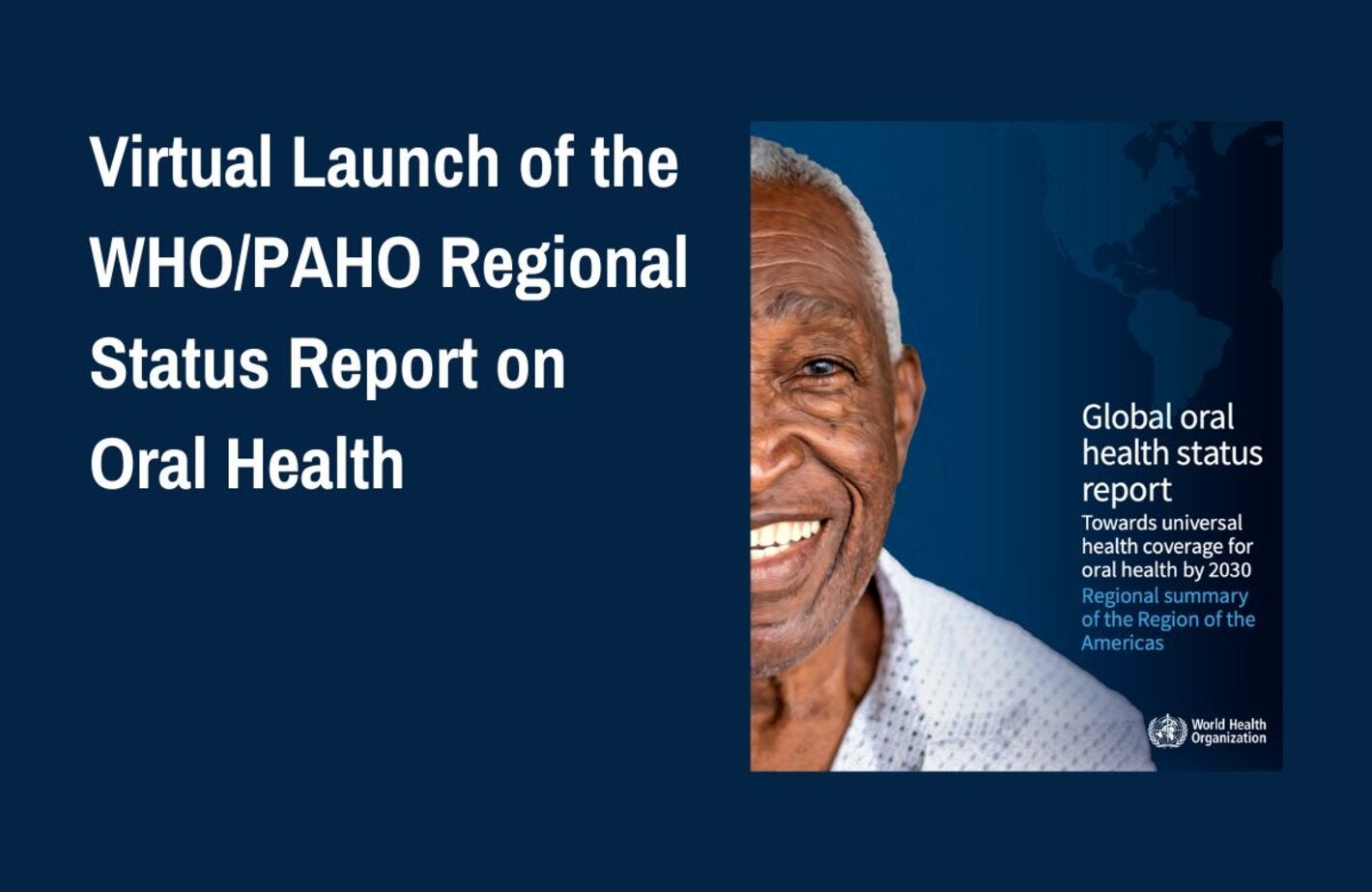
Washington, D.C., 26 October 2023 (PAHO)- The Pan American Health Organization (PAHO) held the virtual launch event of the World Health Organization (WHO)/PAHO Regional Report on the State of Oral Health. This report offers a comprehensive overview of the oral health situation in the Region of the Americas, presenting available resources, as well as outlining the challenges and opportunities for advancing Oral Health Agenda toward the integration of universal health by 2030.
This first regional report builds on the “Global oral health status report: towards universal health coverage for oral health by 2030: executive summary,” published by WHO in 2022. It acknowledges the significance of integrating oral health into the noncommunicable disease (NCDs) agenda and the inclusion of essential oral health care interventions in universal health coverage and access benefit packages (as recognized in the Seventy-fourth World Health Assembly, the landmark resolution WHA74.5).
Oral diseases' prevalence in the Americas represents a significant public health challenge, with an approximate 46% prevalence rate and significant negative impacts on individuals and their communities at any point in their course of life. An estimated 470 million people are affected by preventable oral diseases and other oral conditions, surpassing the prevalence of any other non-communicable disease (NCD). Oral health is often not covered in primary health care, resulting in considerable costs for individuals and society.
The report's findings underscore that the total direct costs attributed to oral diseases in the Americas amount to approximately US$ 157 billion. At the same time, productivity losses from oral diseases are estimated at around US$ 106 billion, the highest expenditure among WHO regions in 2019. Considering the three dimensions of Universal Health Coverage (UHC) - population coverage, service coverage, and cost coverage - it is imperative to find solutions for better coverage, integration and the provision of people-centered, quality oral health services and programs in primary health care.
Public health approaches to oral health strive to provide the maximum oral health benefit for the largest number of people. To achieve this, oral health programs should be integrated into broader and coordinated public health efforts. Member States have to shift from the traditional curative approach to oral health care towards a promotive and preventive approach.
The event was co-organized and co-sponsored with the WHO Collaborating Center (WHOCC) for Quality Improvement and Evidence-Based Dentistry at New York University School of Dentistry.
Access the recording of the webinar here.



